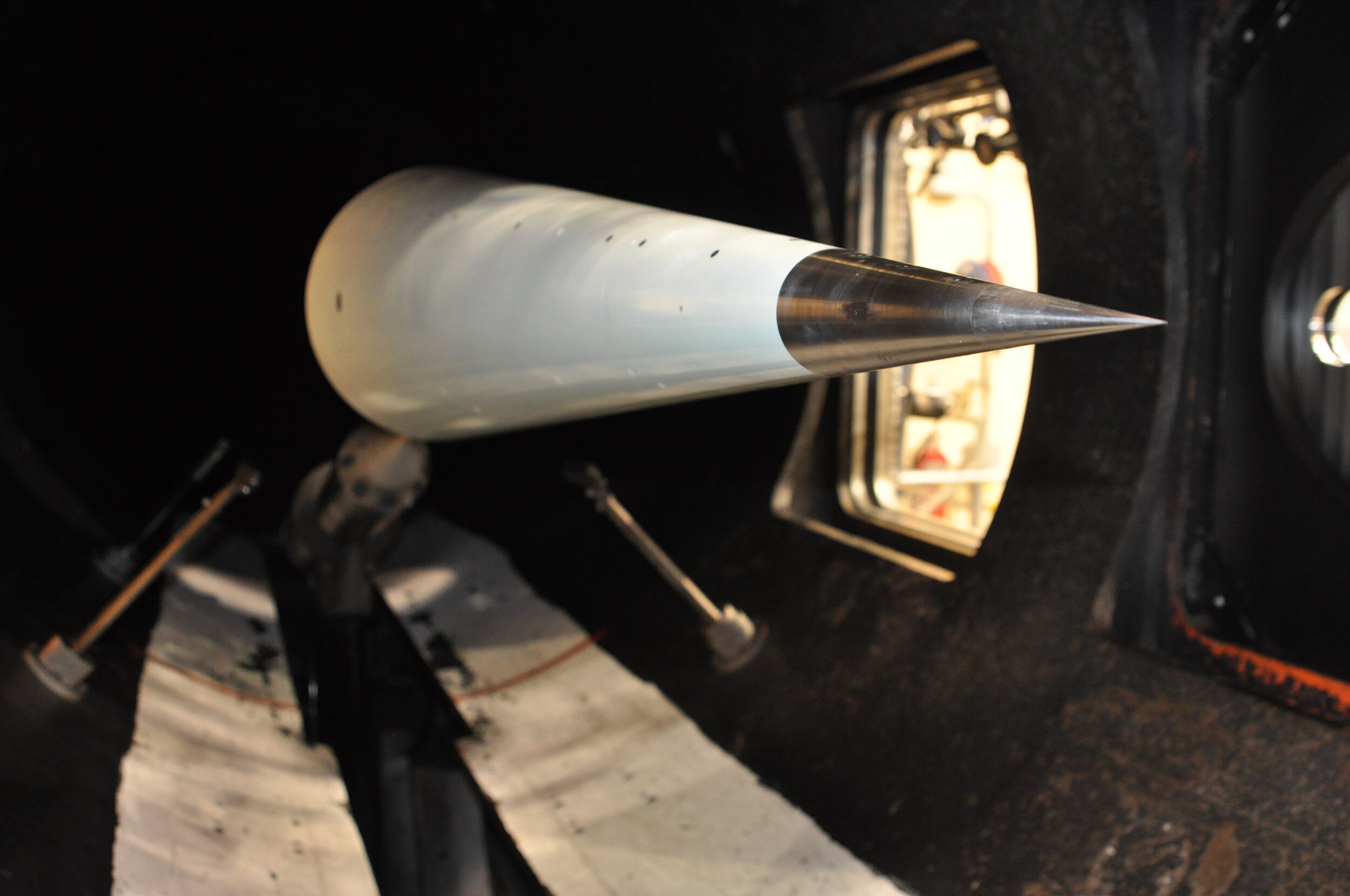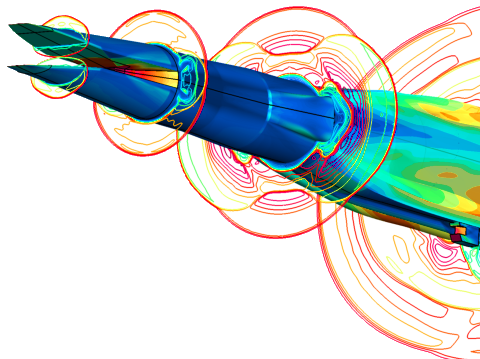
INNOVATIVE RESEARCH
Research and development are at the heart of Ahmic’s operations. Our research programs are primarily focused on hypersonic engine and test vehicle performance, ground-test facility characterization, advanced material testing, turbulence model validation techniques, and flow control systems. Through our unique instrumentation and measurement techniques, Ahmic offers a novel approach to boundary layer analysis across many challenging flow environments.
Boundary Layer Analysis
Fully understanding and optimizing complex flow patterns requires knowledge of the relevant aerodynamic properties, which, in turn, depends upon accurate and reliable diagnostic instrumentation. Knowledge of three-dimensional boundary-layer properties is essential for accurately estimating the local heat-transfer and skin-friction distributions.
Research Objectives:
- Characterize ground-test facilities and test articles; improve flow quality and uncertainties
- Characterize influence of free-stream disturbances, surface roughness, step-temperature effects, etc.
- Characterize 2D/3D shockwave boundary layer interaction (SBLI), including regions of separated, attached, and reverse flow
- Detect boundary layer transition location
Photo: Ahmic’s wall shear sensors were used to investigate hypersonic boundary layer transition on a 7-degree half-angle cone at Mach 10 and 14. Test entries were conducted at AEDC Tunnel 9 and CUBRC LENS I facilities. The multi-component sensors were also able to measure upwash angle patterns as the cone pitched under laminar and turbulent flows to evaluate boundary layer influence on vehicle control surfaces.
Engine Performance
Overcoming the unique challenges in airbreathing engine technology for sustained high-speed flight requires advanced instrumentation and measurement techniques to enhance our understanding of the complex flow phenomena and environments. Properly employed, these new tools will enable systems to push engine performance and operability while minimizing the risk of engine unstart or other undesirable conditions.
Research Objectives:
- Characterize inlet distortion patterns associated with facility type: direct-connect, free-jet, flight
- Provide a robust input source for active flow control systems to regulate engine performance
- Provide insight into scramjet engine unstart and mode transition
- Track real-time shock train position throughout a scramjet inlet, isolator, and combustor
Photo: Ahmic developed and tested an array of 62 distributed wall shear sensors in an active scramjet engine (X-51 scale) at AFRL RC-22. The scramjet was operated for 60+ minute durations at Mach 2.2 with flow temperatures exceeding 2,000°R. The sensors mapped and characterized the wall shear distribution throughout the isolator test section in real-time (500+ Hz) under distorted inflow patterns and a moving shocktrain due to combustion backpressure.
Flight Vehicles
Wall shear is a critical flow parameter that directly influences the energy efficiency, controllability, and performance of flight vehicles. Local wall shear drives the state of the boundary layer and regions of separated flow. This, in turn, dictates the effectiveness of control surfaces, thermal protection systems, and engine performance of flight vehicles.
Research Objectives:
- Measure local vehicle drag and transients
- Provide advances into our understanding of boundary layer transition physics & mechanisms
- Characterize SBLI on vehicle control surfaces
- Provide a robust input source for flight vehicle control effectors
- Demonstrate new sensor technologies for hypersonic flight and suborbital research
Photo: Ahmic has develop wall shear sensors for several hypersonic flight research vehicle programs. The Sandia National Laboratories High Operational Tempo Sounding Rocket (HOT SHOT) achieved an altitude of about 1.2 million feet, speed of Mach 8+, and flew about 220 nautical miles downrange. Ahmic is also supplying sensors for the AFOSR Boundary Layer Transition Experiment II (BOLT II) and AFRL X-60A hypersonic flight vehicles in 2021.
Thermal Protection Systems
Thermal protection systems (TPS) are a critical enabling technology that protects vehicles from the extreme aerothermodynamic heating during re-entry and hypersonic flight. Wall shear is tightly coupled with the TPS ablation cycle and will exacerbate heating rates as surface imperfections increase. New instrumentation is required to inform test methods for characterizing and qualifying future TPS materials.
Research Objectives:
- Provide a deeper understanding of TPS ablation, drag penalties, and incipient failure modes
- Improve the fidelity of shear-dependent ablation rate characterization curves
- Enable arc jet facilities to better characterize core flow parameters and improve in-house capabilities
- Enable a significant and safe reduction in excessive TPS design conservatism
Photo: Ahmic integrated and tested several wall shear sensors at the AEDC HEAT-H2 arc-heated facility. Measurements were conducted on a 15-degree wedge platform at Mach 5.5 and stagnation enthalpies over 3,000 BTU/lbm. Wall shear, the surface flow angle across the wedge, and heat flux (via Reynolds Analogy) were successfully characterized under the test program.
Modeling & Simulation
There remains a paucity of experimental data from which to develop a truly credible foundation for analytical and computational prediction tools within complex flow systems. Accurate experimental measurements are needed to anchor, validate, and verify such methods and their turbulence, heat transfer, and shear stress submodels.
Reseach Objectives:
- Anchor, validate, and improve turbulent models for computational (CFD) tools
- Provide CFD uncertainty quantification, including dominant & subdominant contributions
- Improve boundary-layer and shockwave predictions over complex geometries
- Improve techniques to extrapolate ground-test facility data to vehicle flight
Photo: RANS simulation of the HIFiRE Flight 2 vehicle (courtesy NASA/HAPB). Experimental wall shear data collected using Ahmic’s sensor technology has been used to assess the accuracy of computational results across many government, commercial, and academic test programs. Experimental validation provides an important added value to numerical investigations by highlighting their strengths and weakness, while helping to quantify error and uncertainty estimates.






